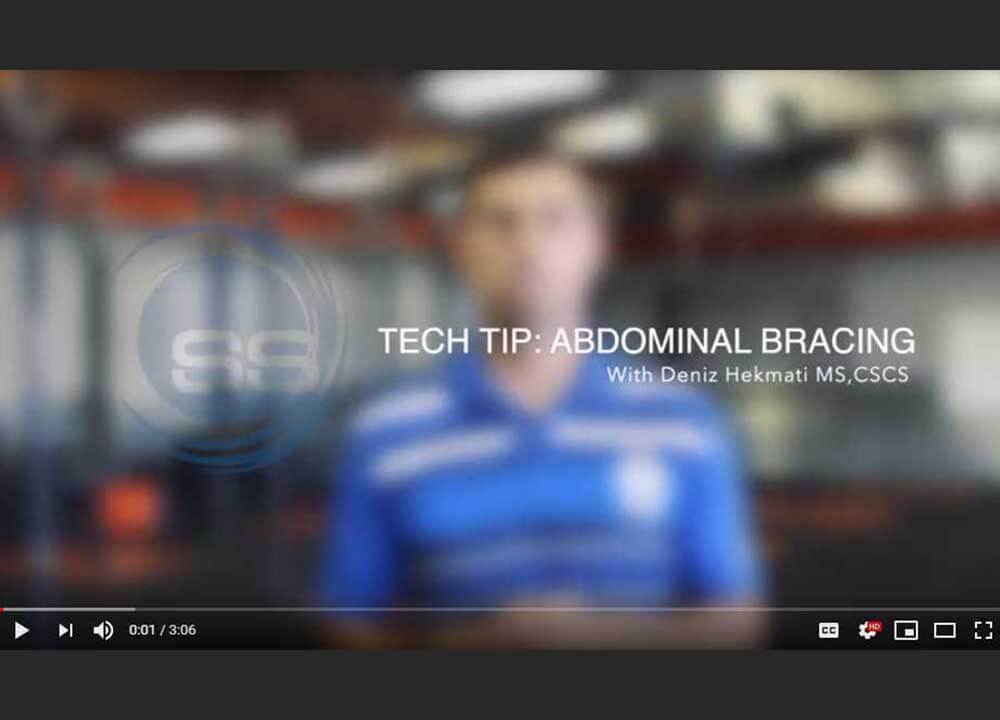Swimmer Strength Tech Tip: Abdominal Bracing

Contributed by Deniz Hekmati – Strength & Conditioning Specialist, Sport Scientist
Deniz Hekmati will be providing regular content on strength and conditioning as Swimming World’s newest dryland contributor.
Throughout the majority of strength, power, and core exercises, it is important that we learn how to properly brace the core with a maintained neutral spine.
In short, bracing is increased stiffness around the core and trunk. To brace, we need to contract the muscles surrounding the abdominal region and trunk.
Take a deep breath in, to fill the belly up with air and contract the core, like you’re trying to protect yourself from a punch to the gut, while keeping the rib-cage from opening up. At this point we are not letting out any air pass through our lungs, until we have about completed the entire movement. Weather we’re performing a squat, push up, plank, or pullup – the brace is imperative.
So, during isometric movements, like planks, the brace always needs to be engaged, while being able to take comfortable breaths without compensating for movement, especially from the spine.
Watch Video
During regular movements, we are holding the breath to increase abdominal pressure and to stiffen the spine. The breath is held down through the eccentric and isometric component, until we get through the toughest part of the concentric phase. This is technique is called the Valsalva Maneuver, and this becomes increasingly important with heavier loads, because it increases abdominal pressure to protect the spine, making it safer and easier to control heavier weight. The more advanced we get on land, the more this will become second nature. However, new and young swimmers have no idea that this can be an asset during a squat or a pushup, nor do they know how to properly perform an abdominal brace.
Therefore, it is highly encouraged that coaches teach young swimmers how to maintain the brace through “the sticky point” of a movement, then to breathe out before taking another deep breath for the next repetition.
For many young swimmers, doing 10-30 perfect body weight squats is plenty of load, if done properly. Especially if the eccentric phase is slower than the concentric phase. Side-tip: all energy transfers from the core, so if the core is braced and stiff, the energy will travel much more effectively creating greater power output.
For a full 20-minute core tutorial, please subscribe to our Swimmer Strength newsletter found on our website swimmerstrength.com.
Note: All swimming and dryland training and instruction should be performed under the supervision of a qualified coach or instructor, and in circumstances that ensure the safety of participants.



